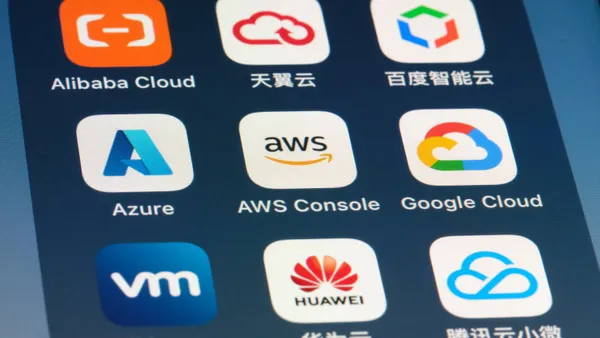With breakthroughs occurring nearly every week, technologies like autonomous vehicles, artificial intelligence, autonomous robots and quantum computing feel like they are on the cusp of revolutionizing enterprise technology.
Business leaders cannot ignore the emerging technologies that will disrupt computing architectures, workflows and talent. Competitors may be investing in emerging technologies, and those who fail to pay attention may fall behind, according to Mike Walker, VP of technology innovation and CTO research at Gartner, in a interview with CIO Dive.
Whether it's active investment or calculated observance, preparing for the wave of AI-based and other advanced technologies is critical for business longevity.
Gartner's long running Emerging Technologies Hype Cycle has read the temperature of the emerging technology market, pinpointed maturity and velocity of key technologies for the coming decade.
The 2018 edition released Monday highlights 35 must-watch technologies out of a field of more than 2,000, dispersing them along the phases of the cycle: innovation trigger, peak of inflated expectations, trough of disillusionment, slope of enlightenment and plateau of productivity.
Technologies expected to reach the plateau of productivity in two to five years include virtual assistants, deep neural nets (DNN), DNN application specific integrated cricuits (ASICs) and 5G.
Technologies pegged for the five to 10 year range include augmented and mixed reality, blockchain, IoT platforms, digital twins, AI platform as a service, quantum computing and conversational AI.
Gartner identified five clear trends across these emerging technologies:
-
Democratized AI, as cloud computing, open source and the "maker" community open AI to the masses.
-
Digitalized ecosystems, as companies shift from compartmentalized infrastructure to platforms that create broader ecosystems to connect humans and tech.
-
Ubiquitous infrastructure, as limitless, always available infrastructure expands business opportunity.
-
Transparently immerse spaces, as technology becomes more human-centric and creates smarter spaces.
-
Do-it-yourself biohacking, as line between what is technology and what is human blurs.
These trends have impacted every industry in some way or another, and every CIO needs to come to terms with how they will affect the business backend, according to Walker. They will change how businesses create apps, what they get out of them, customer interactions and the workforce, among other factors.
The Hype Cycle can serve as an early warning system for executives, and at least jumping on technologies that serve business objectives in the two to five year range could pay big dividends down the road.
The uptick in investment in the technology surrounding classical and quantum computing is lowering the price point and barriers to entry. For AI, custom silicon chips have also made the technology more efficient, readily available and cheaper for customers, Walker said.
While artificial general intelligence is still projected to take more than a decade to reach the plateau, other use cases are becoming more widespread and democratized, which will lead the tech to undergird a significant portion of enterprise technology in coming years.
For example, by 2021, AI will support more than 80% of emerging technologies, and one year later will support more than 80% of enterprise IoT projects, according to Gartner. And by 2020, it will create 2.3 million jobs — though 50% of organizations will lack the relevant AI and data talent.











